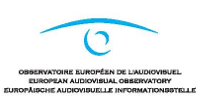European Audiovisual Observatory publishes study on Digital Switchover in Europe
Monday, February 18th, 2013
Digital switchover in Europe from the Atlantic to the Urals”¦
- Russian state television has just announced that progress on Russia’s second DTT multiplex is well underway. From the current 1,200 transmitters in the Russian Federation, over 1,500 should be installed by the end of the year
STRASBOURG — The lead article of this new report is authored by Andrei Richter of the Moscow Media Law and Policy Center. Richter kicks off by explaining the consequences of the new broadcasting law adopted in Russia in the summer of 2011. This new Statute opened the way for major progress towards digital switchover in Russia as it allows the government to licence broadcasting online and gives the President the right to establish the list of broadcasting channels to be carried by the first multiplex of digital TV and radio. These developments meant that, by 2012, the first multiplex carried 8 different national digital must-carry channels plus one regional channel plus one spot left open for Russian public TV to start broadcasting in 2013. By October of last year, almost 40% of Russia’s were receiving 8 channels on the first multiplex.
The licensing of broadcasters on the second DTT multiplex was held in December 2012 and since then, the spots have been awarded to 10 different channels. All winners will sign a 10-year contract for a one-time licence fee of approximately EUR 900,000. Channels on both multiplexes will be offered free of charge to the audience. The third multiplex will carry four “municipal channels” and one national HDTV channel. Richter concludes that, via its new media legislation, Russia has significantly widened “the power of the government and the President to rule on broadcasting”. He points out that this power has economic and political consequences and that “as Russia remains a trendsetter for most of the other CIS countries, this seems to be having repercussions for its neighbours.” This leading article ends with a country by country analysis of the remaining 10 CIS countries, their technological progress made towards digital switchover with the accompanying changes in their legislative instruments to deal with this.
The Related Reporting section of this new publication moves back into the EU to look at switch-off in the Czech Republic, Ireland and the related announcement in Greece and the decisions taken on multiplex and licence allocations in Bulgaria and Spain, for example.
The final Zoom section by Tanja Kersevan Smokvina of Slovenia’s Regulatory authority (APEK) summarises the findings of the South-East Europe DIGI.TV project, based on an evaluation of the legal and technical situation in ten different South-Eastern countries. While Italy, Croatia, Austria and Slovenia had already switched off their analogue signal by the end of 2012, countries such as Albania, Hungary, Serbia and “the former Yugoslav Republic of Macedonia” were still in the transition phase. In Bosnia-Herzegovina and Montenegro the transition phase has not even begun. Smokvina points out that the late starters can certainly benefit from the experiences of the early-adopter countries and points to some key issues.
In the run-up to total digital switch-over this in-depth report gives an extremely valuable overview of the status quo in European broadcasting.
Latest News
- Barb to start reporting TV-set viewing of YouTube channels
- SAT FILM selects multi-DRM from CryptoGuard
- Qvest and ARABSAT to launch OTT streaming platform
- ArabyAds & LG Ad Solutions partner with TVekstra in Turkey
- Freeview NZ satellite TV service to move to Koreasat 6
- Comscore expands YouTube CTV measurement internationally
